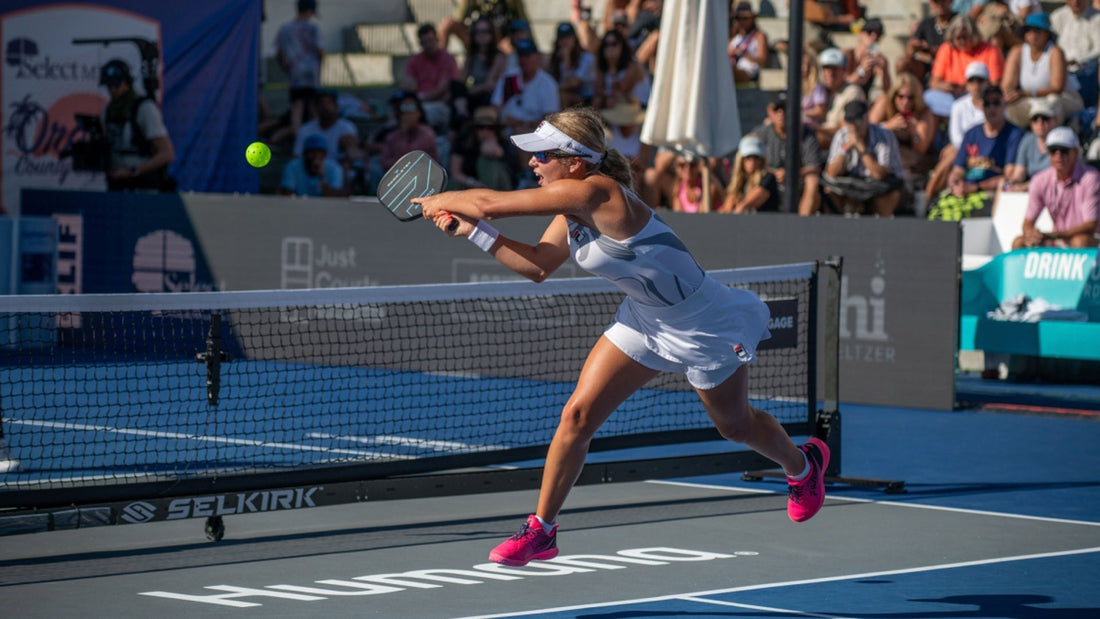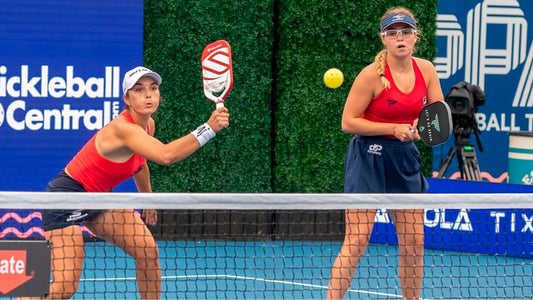
How to Master the Reset Shot in Pickleball
Share
Photo Credit: Chris Rubino/Shutterstock
“Control the tempo, and you control the game.” — Unknown
When you're locked in a fast-paced firefight at the net and the ball is coming in hot, there's one strategic move that can turn chaos into calm: the reset shot. Often overlooked by beginners and even intermediate players, the reset shot is a cornerstone of high-level pickleball strategy. Mastering it not only gives you control of the pace, but also helps you neutralize aggressive opponents and reclaim your position on the court.
Here’s what the reset shot is, why it matters, and how to perfect it.
What is a Reset Shot?
A reset shot in pickleball is a soft shot, usually from mid-court or just behind the kitchen, that drops gently into your opponent’s non-volley zone. It’s designed to take speed out of the rally and “reset” the point, especially when you’re on the defensive.
Unlike a dink or a drop that’s used to start or maintain soft play, a reset shot is reactive. It’s how you recover when you’re under pressure and need to regain control.
When Should You Use It?
The reset shot shines in moments of chaos. It's not just a tool. It’s a tactic that helps you stop the pace of an aggressive opponent and return to a neutral position.
- When you’re being attacked and don’t have time to counter with power
- After being pulled out of position and needing time to reset your stance
- To break a fast volley exchange and return the game to soft play
- When transitioning from the baseline to the kitchen line
You’ll know it’s time for a reset when you’re reaching or scrambling, and hitting a hard shot would only make things worse. That’s your moment to soften the game and regain balance.
How to Hit a Reset Shot
The reset shot is all about touch, timing, and positioning. It’s not about force. It’s about finesse.
-
Loosen Your Grip
Think 3–4 on a scale of 1–10. A softer grip absorbs the ball’s energy and allows for a gentle touch. -
Use a Short, Controlled Swing
Keep your paddle in front of you and avoid long follow-throughs. Let the ball “die” on your paddle. -
Bend Your Knees and Stay Low
Reset shots often come from low positions. Bend your knees, not your waist, to get under the ball. -
Aim for the Kitchen
You’re not trying to win the point—you’re trying to neutralize it. A low bounce in the non-volley zone buys you time.
Reset Shot Drills to Practice
Like any skill, the reset shot needs consistent practice to master. These drills simulate real-game pressure and help you train your touch.
- Wall Practice: Stand 6–8 feet from a wall and practice dinking into a low target, absorbing the rebound.
- Partner Pressure Drill: Have your partner feed fast balls to you at mid-court while you work on softening each shot into the kitchen.
- Transition Zone Drill: Move from the baseline to the kitchen line, resetting the ball with each step forward.
Common Mistakes
A reset shot may sound simple, but it requires control and patience. Avoid these common pitfalls:
- Gripping too tight, which sends the ball flying
- Standing tall, which causes pop-ups
- Swinging too hard, turning a reset into an accidental attack
Stay calm, stay low, and resist the urge to overhit when you’re in defense mode.
Why the Reset Matters
At the higher levels of play, patience and control win more points than brute force. The reset shot is your way to change the tempo, neutralize aggressive opponents, and keep yourself in the point. Master it, and you’ll find yourself not only defending better but setting yourself up to go on the offense.
Resetting doesn’t just give you time to recover. It gives you a chance to flip the momentum.
Game Point
Whether you're battling at the net or climbing back from a tough rally, the reset shot is one of the smartest tools in your game. Practice it, trust it, and use it to gain back control when things heat up.
See you on the courts!



